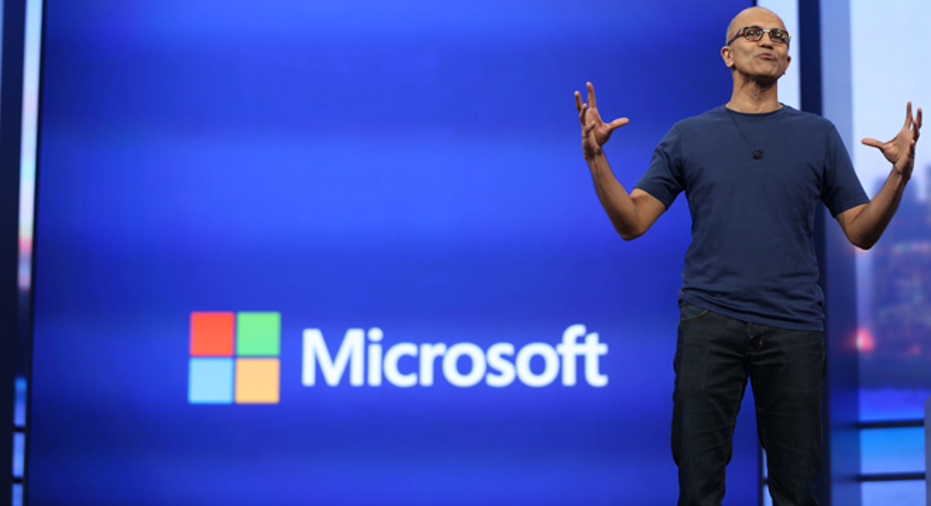Microsoft Takes Aim at Google

All leading technology companies have one thing in common: They don’t play by the rules; they make the rules. They create new growth markets, new product categories and new customer experiences. In other words, they lead. Following is the other guy’s job.
It’s been a long time since that’s been true of Microsoft.
For a good many years now – an eternity in tech time – the software giant has been chasing the likes of Apple, Google, Samsung, even struggling Sony in every hot market from mobile and search to the cloud and gaming. Windows and Office may be corporate mainstays, but Microsoft barely registers in the minds of consumers.
That would be fine except that focusing just on business customers is not a viable strategy. The line between our work and home lives has become increasingly blurred in our always on, always connected world. Consumers, small businesses, and enterprise workers all want to use the same devices, platforms and applications at work that they use on the go. IT managers can no longer confine users to the Microsoft camp.
So the Redmond company is caught between a rock and a hard place. On the one hand, it can’t focus solely on the business world without continued incursion and market share erosion from iOS, Android and cloud computing platforms. Nor can it continue to serve productivity workers and go head-to-head with Apple’s and Google’s dominant consumer platforms and vast ecosystems of devices, services and apps.
It’s a huge dilemma, to be sure.
Former CEO Steve Ballmer used the latter strategy, trying to be all things to all people. But instead of finding a way to leverage his company’s strengths and get competitors to play by his rules, he took on just about every tech giant on their own turf. That strategy – which included acquiring Nokia’s phone business – was flawed from the beginning.
Now it’s Satya Nadella’s turn to solve the puzzle. And while it’s an enormous task to reposition a corporation the size of Microsoft – a company with a $360 billion market cap, 120,000 employees and 1.5 billion customers – that’s exactly what he’s doing.
Nadella has refocused the company on “building best-in-class platforms and productivity services for a mobile-first, cloud-first world.” More specifically, he aspires to “reinvent productivity and business processes,” “build the intelligent cloud platform” and “create more personal computing” so consumers and businesses can “achieve more.”
While that’s certainly more focused than the vague “devices and services” mantra his predecessor announced just before heading out the door, let me translate how I think Nadella plans to make Microsoft relevant in a post-PC world and reclaim the brand of a technology leader.
First of all, devices are not key to Nadella’s strategy. At its core, Microsoft is a software company. Funny thing is, so are Google and Apple. Apple may make the world’s most iconic consumer electronics products, but if devices were key to being successful in mobile and the cloud, Google would not have had such breakout success with Android, Chrome, Gmail, Maps, et al.
In an ironic twist, Google used the same strategy that Microsoft used in the PC space – licensing Windows and Office to every PC clone on earth. Likewise, nearly every device that runs Android and Google’s apps is essentially an Apple knock-off. But instead of using software as products, Google used them as internet services. That was key.
Now Nadella knows he can’t beat Apple, but Google is another story. By launching Windows as a service with Windows 10, he’s betting that it’s not too late to turn the tables on Google. And you know what? Not only do I think he’s making the right call, I believe he has an excellent chance of pulling it off.
By leveraging its dominance in productivity and business processes, Microsoft can effectively take advantage of the same blurred line between our work and home lives that’s propelling Droid and iOS into the corporate world, except from the opposite direction. And that coincides nicely with a rapidly growing entrepreneurial culture that’s always looking for productivity tools to do more with less.
Besides, Google is vulnerable. Android is highly fragmented and Google’s bread and butter, search, is heading in the same direction. Advertisers are spending more and more where Google is weak: mobile display ads and app-based searches. And a growing list of Google X moon shots – Glass, self-driving cars and a host of life science experiments – are eating away profits and returning little.
Microsoft is the one company that can fund platforms and services more effectively than Google can. It dwarfs its search rival in terms of size, revenues and profits. And productivity is Microsoft’s core strength. A focus on platforms and productivity services for mobile and the cloud makes Nadella’s new strategy remarkably compelling.
That’s why Wednesday’s announcement of a 7,800-employee layoff and $7.6 billion write-off associated with the Nokia phone business makes sense. Nadella isn’t going after Apple; he’s going after Google. And he’s doing it from a position of strength: productivity and business. He’s making the rules; that’s the mark of a leader.



















